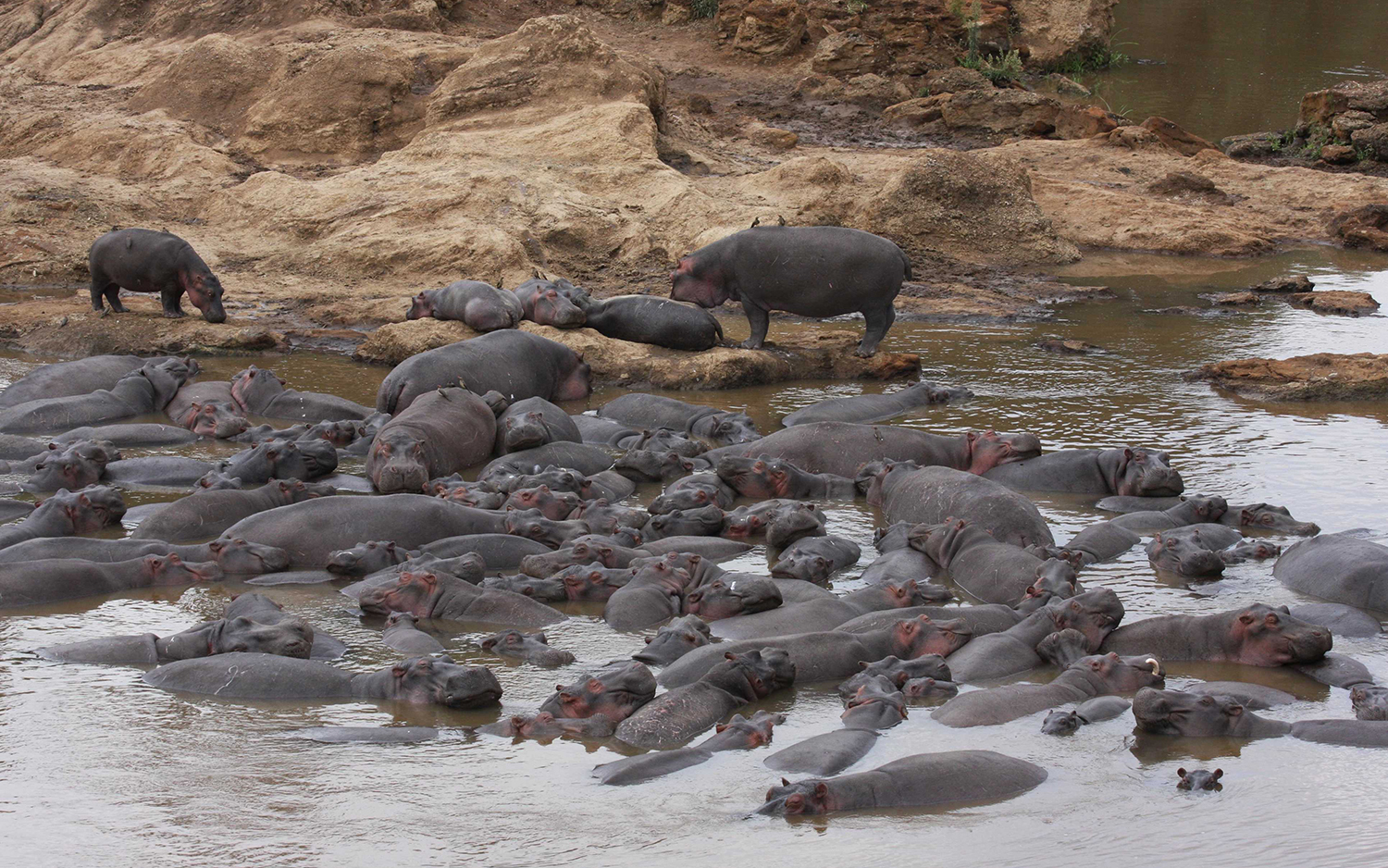Hippo Poop Is Literally Suffocating Fish
Every day, thousands of hippos come to Kenya's Mara River. But they aren't there just to cool down — they also come to poop.
As the hippos wallow, they collectively expel considerable quantities of waste — an estimated 9.3 tons (8,500 kilograms) of excrement each day, scientists recently reported. Large animals' feces nourish ecosystems by providing vital nutrients for smaller organisms, but the sheer volume of hippopotamus dung poses a deadly challenge to fish that live downstream from these communal toilets, leaving the fish gasping for oxygen under a deluge of dissolved hippo poo, according to a new study. [How Much of the Ocean Is Whale Pee (and Worse)?]

Approximately 4,000 hippos live along the Mara River, gathering in an estimated 171 pools to wallow and defecate, the study authors reported. During the dry season, river levels decline and hippo pools shrink, leading to packed gatherings with more animals — and more poop piling up at the bottom of these pools. As the feces decompose, associated microbes hoover up oxygen in the water and produce chemicals that include ammonium and hydrogen sulfide, which can be lethal to fish.
Eventually, hippos' group toilets are "flushed" as powerful, episodic rainstorms wash away the chemical soup of their fecal deposits. These so-called "flushing flows" carry the muck downstream, where the infusion of feces-rich and oxygen-poor water suffocates fish populations, study co-author Emma Rosi, a freshwater ecologist at the Cary Institute of Ecosystem Studies in New York, said in a statement.
"This sudden pulse of deoxygenated water can cause temporary hypoxia [oxygen deficiency] and fish kills," Rosi said.

Over three years, the scientists observed 55 flushing flows at hippo pools in the region, noting their impact on water conditions farther down the river. They found that the amount of dissolved oxygen in downstream water plummeted after 49 of those flows, and 13 times it dropped low enough to cause mass fish die-offs, the researchers wrote in the study.
In fact, the number of fish kills during that time span could be even higher; hungry scavengers likely took advantage of fish deaths in remote locations and gobbled up the evidence before the aquatic carnage could be documented, the study authors reported.
Sign up for the Live Science daily newsletter now
Get the world’s most fascinating discoveries delivered straight to your inbox.
The findings were published online yesterday (May 16) in the journal Nature Communications.
Original article on Live Science.

Mindy Weisberger is an editor at Scholastic and a former Live Science channel editor and senior writer. She has reported on general science, covering climate change, paleontology, biology and space. Mindy studied film at Columbia University; prior to Live Science she produced, wrote and directed media for the American Museum of Natural History in New York City. Her videos about dinosaurs, astrophysics, biodiversity and evolution appear in museums and science centers worldwide, earning awards such as the CINE Golden Eagle and the Communicator Award of Excellence. Her writing has also appeared in Scientific American, The Washington Post and How It Works Magazine. Her book "Rise of the Zombie Bugs: The Surprising Science of Parasitic Mind Control" will be published in spring 2025 by Johns Hopkins University Press.










